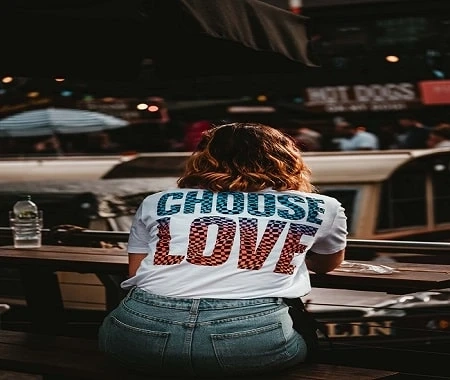Turning a plain tee into something unique is a fine yet simple process. The industry offers various methods to transform a simple piece of fabric into a canvas of self-expression. Understand the various clothing printing techniques. This method can help individuals and businesses make informed choices when it comes to creating customized apparel.
Each method like screen printing near me has its pros and cons. In this blog, we will work you through the most common shirt printing methods, shedding light on their unique processes and applications.
T-shirt Printing Methods for a Dazzling Result
There are a variety of clothing printing methods. Let\'s explore their pros and cons:
1. Direct-to-Garment Printing
DTG printing is a traditional method. Specialized inkjet printers apply water-based inks directly onto the fabric in this printing method. This technique is ideal for complicated designs and detailed images. This technique offers a high level of colour accuracy. This is best suited for light-coloured fabrics. Because of the transparent nature of the water-based inks.
- Pros
High-quality, detailed prints.
Suitable for intricate designs and small batches.
- Cons
Limited colour vibrancy on darker fabrics.
Equipment costs can be high.
2. Screen Printing
One of the oldest and most widely adopted methods, this clothing printing style uses a mesh screen stencil to apply ink onto the fabric. This results in vibrant and durable prints. Screen printing excels in large-scale production. However, its initial setup costs may make it less cost-effective for smaller quantities.
- Pros
Cost-effective for large quantities.
Ideal for bold, vibrant designs.
- Cons
Not suitable for detailed or complex designs.
Setup costs can be significant.
3. Dye Sublimation Printing
Dye sublimation printing can be applied to all shirt areas. This method involves using heat to transfer dye onto the fabric. Which results in a permanent and vivid print. This method is particularly effective for polyester fabrics. Because the dye bonds create a seamless and durable design with fibres. This process produces high-quality all-over prints.
- Pros
Full-color prints with high resolution.
Durable and long-lasting.
- Cons
Limited to polyester fabrics.
Not cost-effective for small batches.
4. Heat Transfer Vinyl Printing
HTV printing involves cutting designs from coloured vinyl sheets. After that heat press them onto the fabric. This method is popular for creating personalized and vibrant designs on various fabrics. It includes cotton, polyester, and blends. HTV printing is relatively simple and offers excellent durability.
- Pros
Great for small batches.
Versatile for various fabrics.
- Cons
Limited to simpler designs.
Vinyl may peel over time.
5. Plastisol Screen Printing
This is a type of indirect screen printing method. But instead of printing directly on a t-shirt, the design was first put on heat transfer paper. This screen printing is known for its versatility. Find vibrant and durable prints with screen printing near me. Plastisol transfers customize sportswear and promotional apparel effectively.
- Pros
Suitable for intricate designs.
Durable and vibrant prints.
- Cons
Additional steps compared to direct screen printing.
Limited to specific colour options.
6. CAD Heat Transfer Vinyl Printing
CAD heat transfer vinyl printing utilizes computer-aided design technology. This technology helps to cut intricate designs from vinyl sheets. The cut design is then heat-pressed onto the fabric. This method is popular for creating personalized and detailed designs, offering a wide range of colours and finishes.
- Pros
Perfect for detailed and customized designs.
Versatile and durable.
- Cons
Time-consuming for large batches.
Initial setup costs can be high.
7. Direct-to-Film Printing
DTF is a top-notch clothing printing method. It prints designs on a PET film. Designs transfer to a shirt using sticking powder and heat. This process, though new, gains popularity for high-quality prints on fabrics like cotton and polyester..
- Pros
Offers high-resolution prints.
Suitable for various fabrics.
- Cons
Requires specialized equipment.
Production speed may be slower.
Other Techniques to Add Designs to T-Shirts
1. Embroidery
Embroidery is a timeless technique. It involves stitching thread directly onto the fabric to create intricate and textured designs. This method adds a premium and professional touch to apparel. Which makes it a popular choice for corporate logos, team uniforms, and personalized gifts.
- Pros
Adds a textured, premium feel.
- Cons
Not suitable for intricate designs.
2. Airbrushing
Airbrushing uses a spray gun to apply paint onto the shirt. This method creates unique, hand-painted designs. It offers a personalized touch and is often used for artistic or custom designs.
- Pros
Allows for artistic and unique designs.
- Cons
Limited to certain fabrics, can fade over time.Which Printing Method is Right for You?
Choosing the right clothing printing method depends on various factors. It includes the design complexity, quantity, budget, and fabric type.
- DTG printing is excellent for detailed and colourful designs in smaller batches, while screen printing is cost-effective for larger quantities.
- Dye sublimation is ideal for polyester fabrics, providing vibrant and breathable prints.
- HTV and plastisol transfer printing are suitable for durable and personalized designs
- CAD offers more intricate possibilities.
- DTF printing combines flexibility and colour vibrancy for a modern approach.
Conclusion
Navigate the shirt printing world wisely. Understand diverse methods of clothing printing for informed decisions. Prioritize detail, durability, or cost-effectiveness. Find a tailored printing method. Experiment with techniques like screen printing near me for a perfect balance. Ere your shirts leave a lasting impression by blending creativity and functionality.



